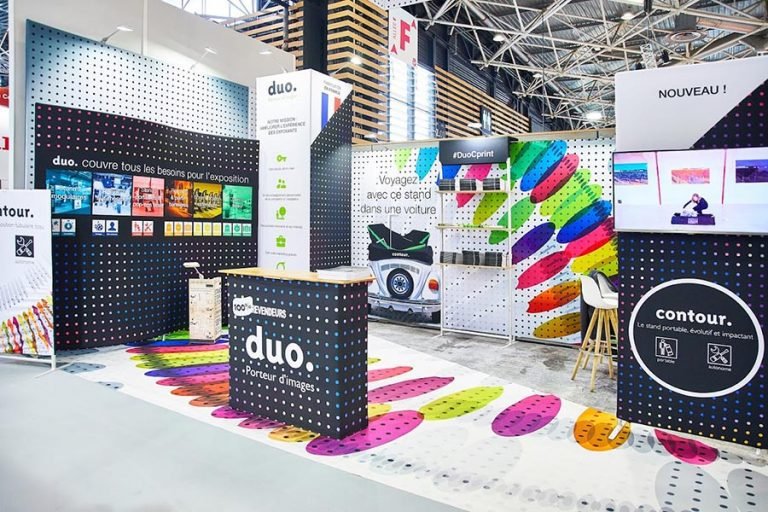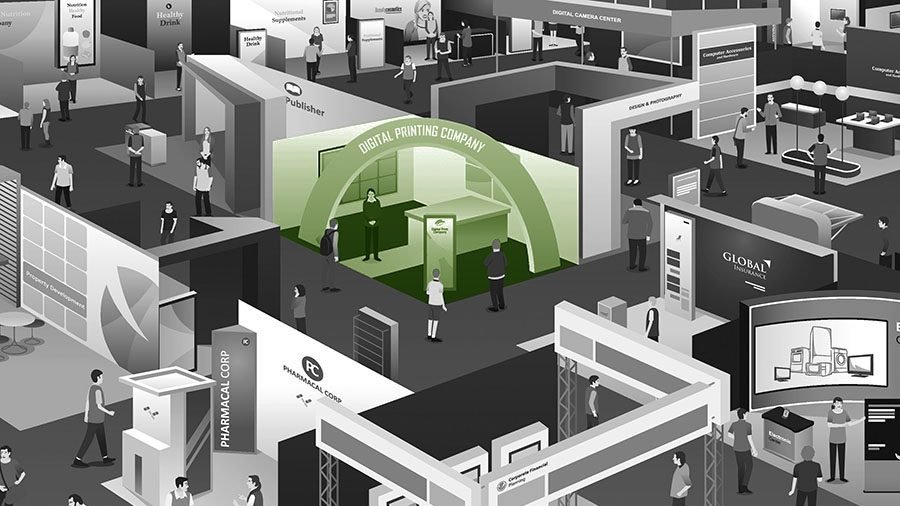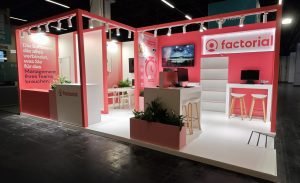To understand the future importance of sustainable stands it is important to review the latest trends and consumer statistics regarding sustainability.
According to a study by the Jealsa Consumption and Sustainability Observatory, sustainability and care for the environment influence at least 60% in the purchase decision of Spaniards when purchasing a product or service. In addition, according to Samy Alliance, sustainability has increased by 32% in social networks, becoming a concern among consumers¹.
This same study concludes that for 79% of Spaniards it is important or very important that companies have their own Corporate Social Responsibility program.
This 2023, consumers will put price and environmental impact first, being more flexible to new forms of consumption such as second-hand or renting.
Taking this information into account, it can be inferred that the sustainable exhibition stands they can be an attractive selling point for consumers, especially those who are concerned about the environmental impact of the products and services they consume. Sustainable stands can show that a company is committed to sustainability and caring for the environment, which can increase consumer trust and loyalty towards the brand.

Take advantage of the ecological stands to promote the sustainable image of your brand.
If you are a company committed to the environment and have chosen to build sustainable stands, it is important that you communicate this properly to the visitors of the fair. In this way, you will not only be highlighting your commitment to the environment, but you will also be making a good impression on those attending the fair and potential customers.
Here are some marketing and promotional strategies that you can use to highlight your sustainable stands before, during and after the fair:
Prior publicity: Take advantage of social networks and other means to communicate that your company will have a sustainable stand at the fair. Share images and details about the design and sustainable materials that will be used in the construction of the stand.
Stand decoration: Use the decoration of the stand to highlight its sustainability. For example, place plants and natural elements that refer to nature and commitment to the environment.
Promotional material: Use promotional materials such as brochures, business cards and sustainable merchandising to communicate the commitment to sustainability. You can even include information about the construction of the stand and the sustainable materials used.
Customization of the uniform: Personalize the uniform of the employees who will attend the stand with messages related to sustainability, such as "We are a company committed to the environment" or "Our stands are sustainable."
Post-show: After the show, share images and details about the success of the sustainable stand and how the company is committed to sustainability in general. You can post on social networks or send emails to fair attendees to keep them informed about your sustainable actions.
In summary, adequately communicating the sustainability of your stands is essential to highlight your commitment to the environment and generate a good impression on those attending the fair. Use these marketing and promotional strategies before, during and after the fair to highlight your sustainable stands. Let's do it!

Ok you will say... but how are the "sustainable stands"? and how to make yours.
100% sustainability is something very difficult to achieve. Not only because all the processes involved must have a neutral carbon footprint, but also because it is very difficult to certify and involves immense bureaucracy. In any case, there are already several paths that you can follow without getting lost to get a stand that you can call ¨Sustainable¨.
First of all tell you that there are companies specialized in sustainable stands, the best option is to ask for a budget and a design. but how do you know that the stand they are offering you is truly sustainable? This is where you have to claim the certifications of your materials and processes. I leave you a list of these materials and their certifications (I only include the materials most used in the fairs)
| Material | booth use | Sustainability grade (1-10) | Sustainability Certification | Key procedure required by certification |
|---|---|---|---|---|
| Agglomerate | structures, walls | 5 | FSC | sustainable forest management |
| Melamine | surfaces, furniture | 4 | Greenguard | Volatile organic compound (VOC) emissions |
| plywood | structures, surfaces | 6 | FSC | sustainable forest management |
| Aluminum | Structures, panels | 8 | ISO 14001 | Environmental management |
| Iron | structures | 7 | ISO 14001 | Environmental management |
| Carpet | floor coverings | 5 | CRI Green Label Plus | VOC emissions |
| Printed frontlit canvas | graphics, banners | 6 | PVC-free | absence of PVC |
| printed textile | graphics, decoration | 7 | Oeko-Tex Standard 100 | Absence of toxic substances |
| Trevira type textile | graphics, decoration | 8 | Oeko-Tex Standard 100 | Absence of toxic substances |
| self adhesive vinyl | graphics, decoration | 4 | GreenGuard Gold | VOC emissions |
| methacrylate | Surfaces, corporeal letters | 6 | ISO 14001 | Environmental management |
| Forex | surfaces, structures | 5 | FSC | sustainable forest management |
It is important to note that each certification may require different key procedures, as indicated in the last column of the table. For example, FSC certification focuses on sustainable forest management, while Greenguard certification focuses on the emission of volatile organic compounds (VOCs).

Sustainable stand ideas for your next project
There are a thousand ways that a sustainable booth can take, that is very clear when doing a search on Pinterest. We leave you a link to a board that we have created with designs that catch our attention
Play it safe: sustainable modular stands
Although woodworking stands can be designed with sustainable materials, modular stands present an even greener and more versatile option. Unlike carpentry stands that are built from scratch, modular stands are made of reusable modules that can be combined in different ways to suit different spaces and needs.
The fact that the modules are reusable and adaptable allows for greater efficiency in the use of materials and resources. The modular stands They can be disassembled and reused at different fairs and events, reducing the amount of waste generated. Furthermore, as they are standard modules, the need for customization and adaptation is reduced for each event, which in turn reduces material waste.
Another advantage of modular stands is that, as they are designed to be easily transported and assembled, the carbon footprint associated with transport and assembly is reduced. In addition, many manufacturers of modular stands use sustainable materials in their production, such as bamboo, certified wood, or recycled materials.

In conclusion, although the carpentry stands can be sustainable, modular stands offer an even more ecological and versatile option. The reuse of modules, efficiency in the use of materials and resources, and the use of sustainable materials in production are just some of the advantages that make modular stands an attractive option for those seeking to reduce their environmental impact at fairs and events.
If you want to learn about modular systems I recommend that you visit our post: All about modular stands, is a fairly long post that summarizes most of the modular trade fair systems and their features.





